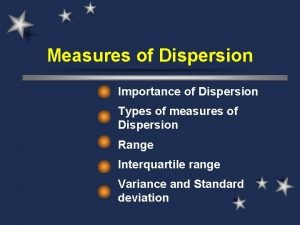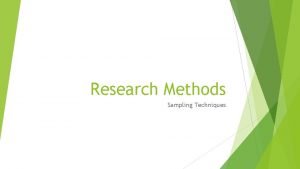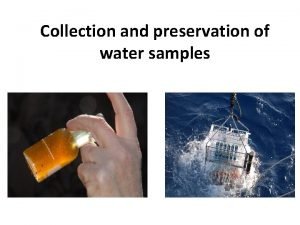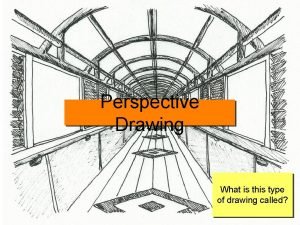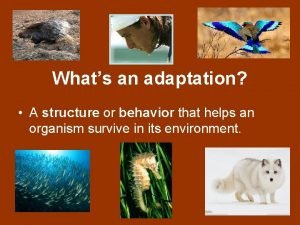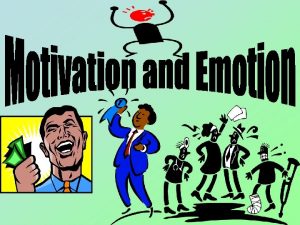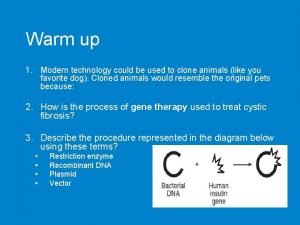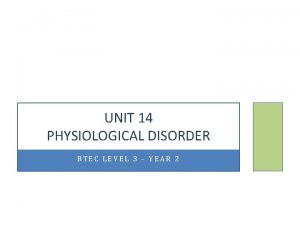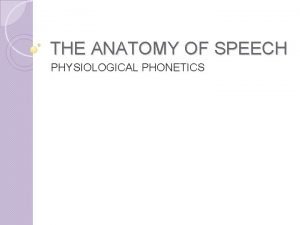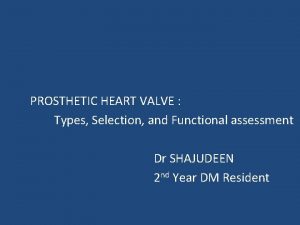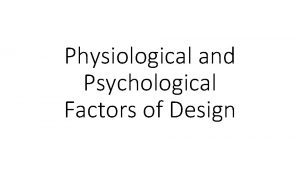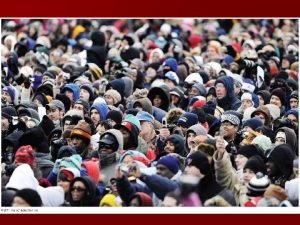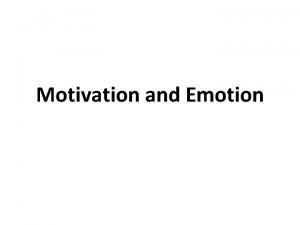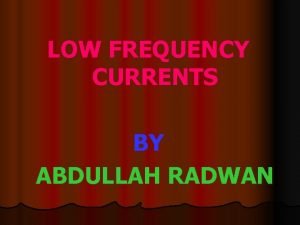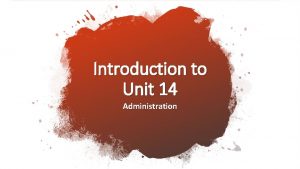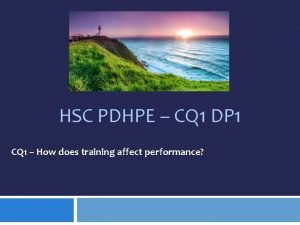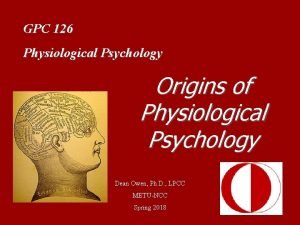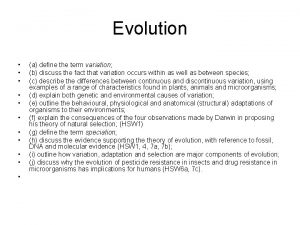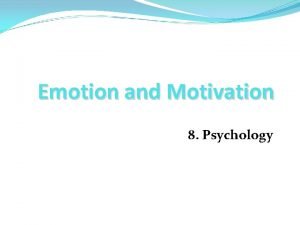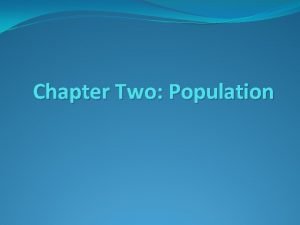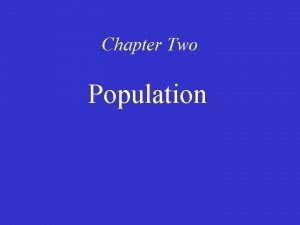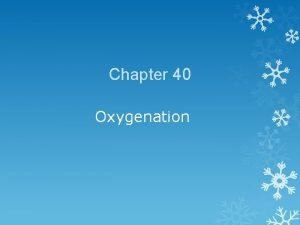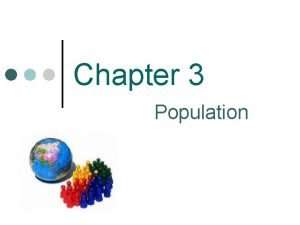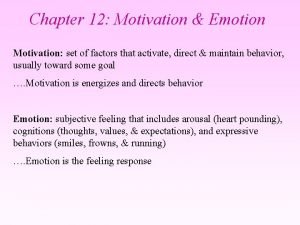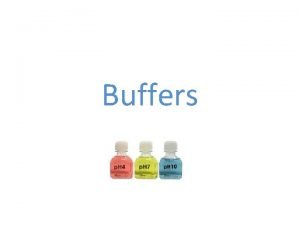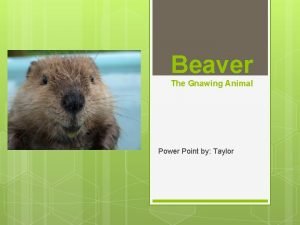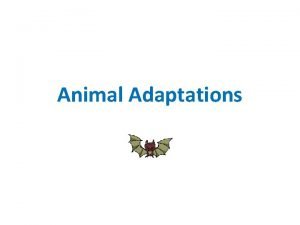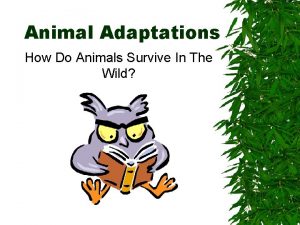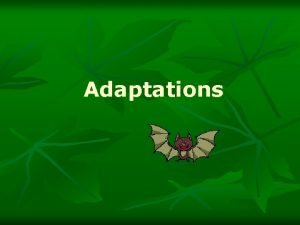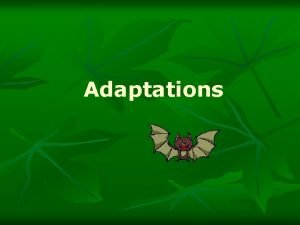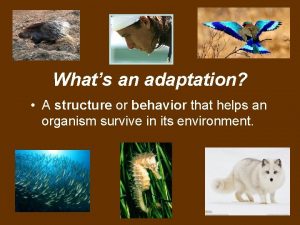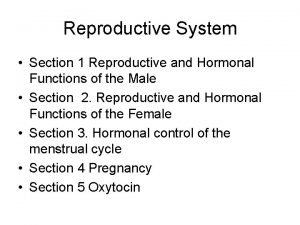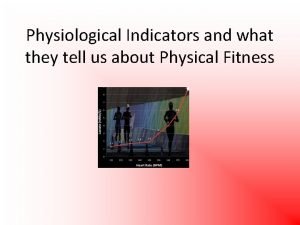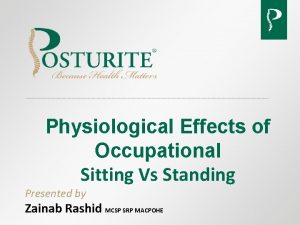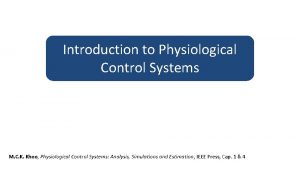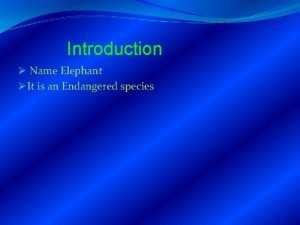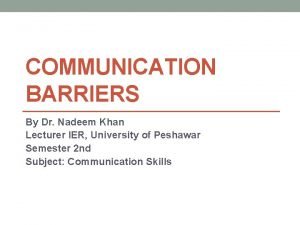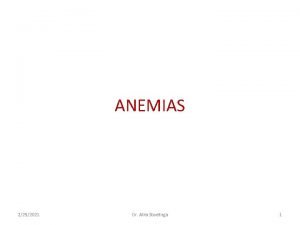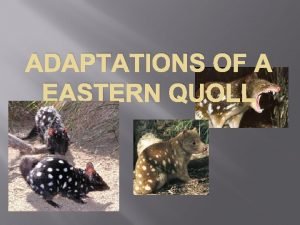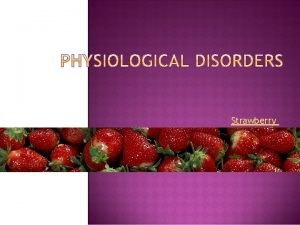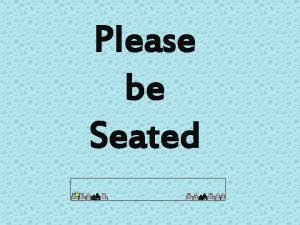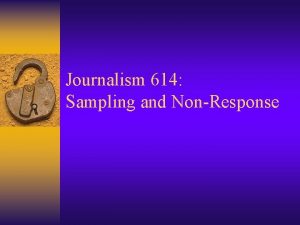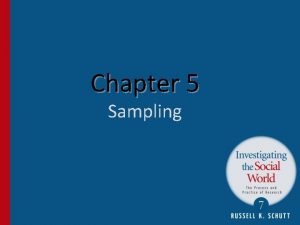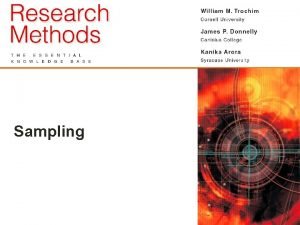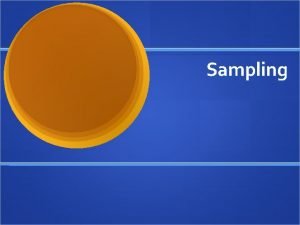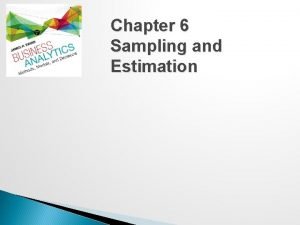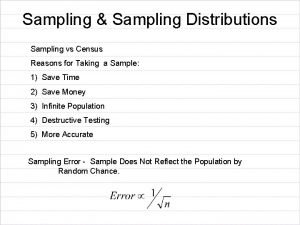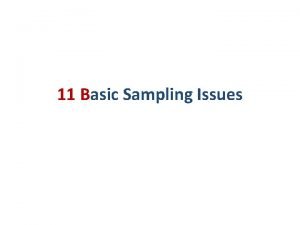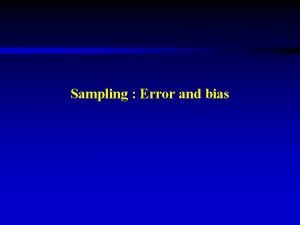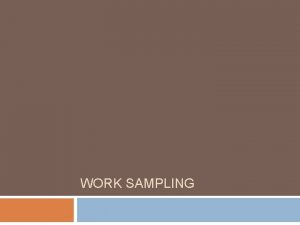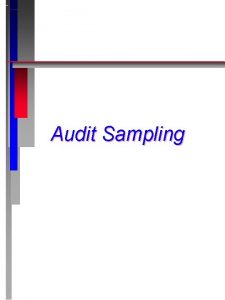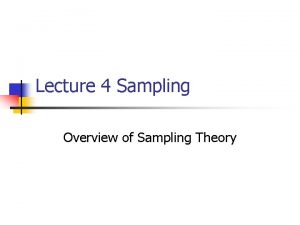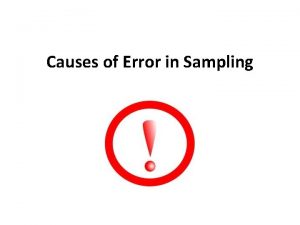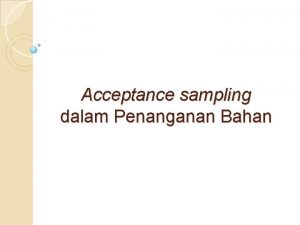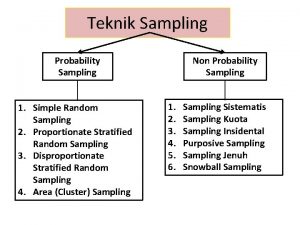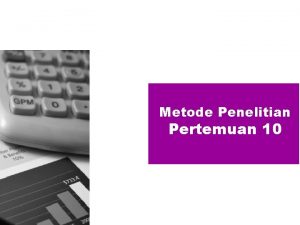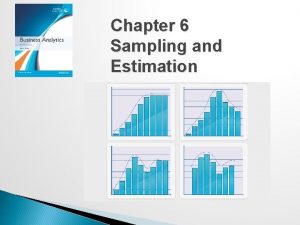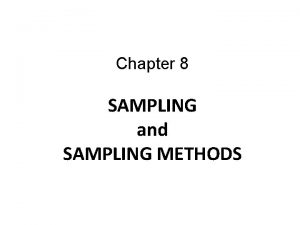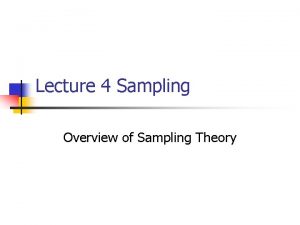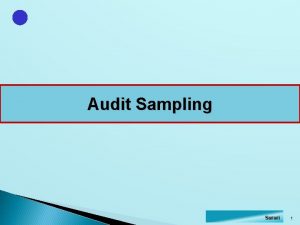Physiological Perspective Physiological Perspective Types of measures Sampling



































































- Slides: 67

Physiological Perspective

Physiological Perspective Types of measures Sampling of Research Topics • Eysenck, Gray: Extraversion • Zukerman: Senation-Seeking • Cloninger: Neurotransmitters • Davidson: Brain Asymmetry • Amodio: Political Brain

Phineas Gage (1850 s) n Dynamite accident n Changes in personality n Frontal lobe insights n Executive functions n Emotion regulation n Impulsivity, planning



Orbital-frontal Cortex

Dorsolateral Prefrontal Cortex

Anterior Cingulate Cortex

3 Frontal Lobe Clinical Syndromes n Dorsolateral (Cognition) – Working memory, decision-making, reasoning n Orbital-frontal (Emotion) – irritabilty, anger, low empathy n Anterior Cingulate (Motiv) – apathy

ADD Symptom Clusters 1) Attention deficit • • • Concentration problems Easily distracted Sloppy, disorganized 2) Impulsivity • Get into fights • Stubborn, strong-willed 3) Emotion disregulation • feel guilty, feel angry

ADD relation to Big Five

ADD relation to Big Five FM ADHD Controls

Hoogman etand al. ADHD (2017) Brain Volume Amygdala Hippocampus Basal Ganglia Accumbens

170 AD: Galen’s 4 Humors Bodily fluids personality (Hippocrates, 400 BC) Phlegm Blood Yellow Bile Black Bile phlegmatic sanguine choleric melancholy (170 AD) calm happy excitable unhappy

1809 Phrenology: Francis Gall Traits=bumps n Bump=more brain tissue n Pseudoscience n Brain? Localization of of function—yes. n Cranial bumps? Wrong. n

Sheldon’s Somatotype Theory (1940 s) § Body shape personality Mesomorph Athletic Ectomorph Slight Endomorph Rotund Dominant Introverted Jolly

Physiological Measures l o P h p a r g y “Meet the Fockers” (2004)

Electrodermal Activity (EDA) Derma= skin n Sweat conducts electricity (“GSR”) n Sweating due to Sympathetic Arousal n Emotional arousal (pain, anxiety, fear, guilt…) n Elevated baseline EDA & personality: n – Neuroticism

Lying & Sympathetic Arousal – Ancient Arabia n lick hot iron… if burn tongue, you are lying. – Ancient China & India n chew rice powder, spit out… if dry, you are lying. – Sympathetic arousal n inhibit digestion (e. g. saliva ) n activate metabolism respiration heart rate ventilation

Cardiovascular activity n Blood pressure —measure of stress reactivity n Heart rate —increases with anxiety, fear, arousal, cognitive effort

Cardiovascular activity n Cardiac reactivity – greater than normal increase in blood pressure and heart rate in response to a challenge – Associated with Type A personality: (impatient + competitive + angry/hostile) – Cardiac reactivity & Type A is associated with elevated risk of coronary heart disease

Brain Activity n Brain spontaneous electrical activity n Measure by electrodes on scalp (EEG) – Evoked Potential technique – Stimulus given, EEG measured – Evoked Auditory Potential (Auditory stimuli) – Evoked Visual Potentials (Visual Stimuli) – Waves patterns analyzed n Augmenting vs Reducing

P 300 a positive electrical potential that reliably occurs 300 milliseconds after a stimulus

P 300 n Discovered in 1964 n “Context updating” signature Schizophrenia - weak (abnormal amplitude) Borderline Disorder - delayed (abnormal latency)

P 300 impulsiveness - longer latency creativity, openness, curiosity “need for cognition” (intellectual curiosity) - higher amplitude P 300 a novelty orienting P 300 b surprise orienting

Brain Imaging Mapping brain structure and function l Positron emission tomography (PET) l Functional magnetic resonance imaging (f. MRI) l Deffusion Tensor Imaging l neural connectivity, mapping circuits

Canli et al (2001), f. MRI n. E: +pics n. N: -pics

De Young et al. (2010)

Positron Emission Tomography

Neuroscience of extraversion ■ Johnson et al. (1999) • PET • 9 low (I), 9 high (E) • resting state only ■ RESULTS • Thalamus • Insula • Broca’s Area I: ↑ Anterior, E: ↑ posterior I > E ( talking to yourself !!)

Neuroscience of spiritual feelings Borg et al. (1999)

Neuroscience of spiritual feelings Borg et al. (1999) • Measured “self-transcendence” • Measured serotonin receptor density Conclusions • Weak serotonin binding • Weak gating of sensory stimuli [? ]

Other Physiological Measures n n Blood-born metabolites Monoamine Oxidaze (MAO) Immune system (e. g. , saliva swabs) e. g. Master et al. (2009). . . “Emotional Approach”

Emotional Approach Scale Master et al. (2009) n n After a profoundly upsetting event, I take time to figure out what I’m really feeling In especially trying circumstances, I delve into my feelings to get a thorough understanding of them When dealing with unusual challenges, I realize that my feelings are valid and important When coping with a really stressful experience, I acknowledge my emotions

Masters et al. (2009) Higher scores on the emotional approach scale significantly predicted… 1. Stronger immune response to laboratory stressor (physiological challenge) 2. Reduced recovery time after heart surgery

Other Physiological Measures n Cortisol –Kagan & Snidman (1991) n Testosterone (Ts) –Dabbs & Dabbs (2000) “crafty”, “sly”, “manipulative”

Hormones and Personality n Gender differences in personality – Agreeableness – Neuroticism (d=. 50) n Large gender differences in testosterone n Indivdual differences in testosterone within sex aggressiveness ? ?

Testosterone and dominance n Masur et al, 1992 – Post-victory surge n n High Ts Jobs: – Trial Lawyer – Actors – Athletes High Ts traits – Boastful, arrogant, devious

Testosterone and 2 D: 4 D l Fetal testosterone levels influence length of third finger. Estrogen influences length of first finger. l Adult digit ratio is useful in research as a proxy for fetal Ts exposure levels l Gender differences exist in 2 D 4 D: lower ratio in men.

Testosterone and 2 D: 4 D Meindl et al. (2012) l 2 D 4 D is correlated with adult facial masculinity. l 17 boys, aged 3 -11. l Facial dimensions recorded. l Data used to construct computer model of 2 D 4 D effects on facial shape.

Meindl et al. (2012) 2 D: 4 D

Testosterone and 2 D: 4 D l Most consistent personality correlates of Low 2 D 4 D: Sensation-Seeking Impulsiveness Aggression Interpersonal dominance / boldness Psychopathy l However, the associations are typically not very strong in magnitude and often fail to replicate.

Physiological Perspective Measures Theories • Eysenck, Gray: Extraversion • Zukerman: Senation-Seeking • Oxley / Amodio: Political Brain • Cloninger: Neurotransmitters • Davidson: Brain Asymmetry

Physiological-Based Dimensions of Personality Extraversion-Introversion Eysenck’s Theory: Introverts are characterized by higher levels of activity in the brain’s ascending reticular activating system. ARAS

Ascending Reticular Activating System 1950 s: ARAS controls amount of Cortical Arousal

Yerkes-Dodson Law: Optimal Arousal for a Task

Extraversion-Introversion n When given a choice, extraverts prefer higher levels of stimulation than introverts n Classic study by Russ Geen (1984) – Compared Extrav (E) and Introv (I) – Noise level preferences – Autonomic reactvity

Geen (1984) n Learning task n Distracting noise over headphones n Hi E, Low E subjects n Noise level chosen by Self, Intr, Extr n Measure stress reactions (physio)

Extraversion-Introversion n Geen (1984) Introverts and extraverts perform task… Best under their own chosen stimulation level Poorest under level chosen by opposite personality

Eysenck’s Theory of E No baseline differences in arousal. n Revised theory: n Extraversion-Introversion= Differences in arousal reactivity, not average levels of arousal

Reinforcement Sensitivity Theory (Gray, 1972; 1990) Jeffrey Gray, biopsychologist (rats) n Alternative theory of Extr and Neur n Focuses on two different brain systems: n v Beh Activation System BAS v Beh Inhibition System BIS

Approach Avoidance

Sensitivity to Reward and Punishment Behavioral Activation System (BAS): • Sensitive to reward cues • Activate/Energize/Get • Personality? impulsive Behavioral Inhibition System (BIS) Sensitive to threat cues n Inhibit/Stop/Evaluate n Personality? Anxious n

Integration of Gray and Eysenck theories n Impulsive =High extraversion, moderate neuroticism n Anxious =Moderate introversion, high neuroticism

BI S Gray’s Rotation of Eysenck N BA S E

But data supports a closer alignment to Eysenck BIS E S BA N

Larsen, Chen, Zelenski (2003) Learning task (fast colour naming) n Manipulate type of trial feedback: n – Punishment for wrong answer – Reward for correct answer n Measure BAS and BIS traits. RESULT? – BIS people did better in punishment condition – BAS people did better in reward condition

Size of bets placed after punishment vs reward n Pierce-Mc. Call & Newman (1986) IV= won versus lost. DV= Size of bet on next task. Result: After gain: After loss: E=I E>I

Physiological Perspective Measures Theories • Eysenck, Gray: Extraversion • Zukerman: Senation-Seeking • Oxley / Amodio: Political Brain • Cloninger: Neurotransmitters • Davidson: Brain Asymmetry

Sensation Seeking Marvin Zuckerman 1970 s-80 s n Sensory deprivation studies: Extraversion n Hebb’s Optimal Level of Arousal theory n SSSK =Diff in optimal level of arousal n Zuckerman’s Sensation Seeking Scale n Moderate positive correlation between extraversion and sensation seeking n

Sensation-seeking 4 factors (DEBT) n. Disinhibition n. Experience-Seeking n. Boredom Susceptibility n. Thrill and Adventure Seeking

Sensation Seeking n Physiological basis for sensation seeking – Monoamine Oxidase (MAO) – Enzyme that regulates neurotransmitters – After neurotransmitter binds to receptor need to stop it somehow – MAO puts the brakes on (at the receptor)

Sensation Seeking n Physiological basis for sensation seeking – Too much MAO= strong braking – Too little MAO= weak braking – High SSK have low MAO – Stimulation seeking is due to weak synaptic braking

Cortical Evoked Potentials and Sensation-Seeking n Augmenting is evident among high SSkers n Reducing is evident among low SSkers

MAO, Child Abuse, and Antisocial Tendencies n Interaction of gene and child maltreatment experiences n Low MAO + maltreatment= high risk to become antisocial n Caspi et al (2002)


Physiological Perspective Measures Theories • Eysenck, Gray: Extraversion • Zukerman: Senation-Seeking • Oxley / Amodio: Political Brain • Cloninger: Neurotransmitters • Davidson: Brain Asymmetry
 Repeated-measures design
Repeated-measures design Probability vs non probability sampling
Probability vs non probability sampling Quota sampling definition
Quota sampling definition Cluster sampling
Cluster sampling Contoh target perilaku dalam observasi
Contoh target perilaku dalam observasi Cluster random sampling vs stratified
Cluster random sampling vs stratified Sample frame example
Sample frame example Natural sampling vs flat top sampling
Natural sampling vs flat top sampling Physiological perspective
Physiological perspective Measures of dispersion importance
Measures of dispersion importance One point perspective house
One point perspective house Silo perspective vs business process perspective
Silo perspective vs business process perspective What is quota sampling
What is quota sampling Sampling methods psychology
Sampling methods psychology Types of water sample
Types of water sample What is this
What is this Structural adaptation definition
Structural adaptation definition Masolow
Masolow Example of physiological adaptation
Example of physiological adaptation Unit 14 health and social care level 3
Unit 14 health and social care level 3 Unit 14 task 1
Unit 14 task 1 William james theory
William james theory Phonetic anatomy
Phonetic anatomy Physiological buffer system
Physiological buffer system Physiological process in reading chart
Physiological process in reading chart Physiological regurgitation
Physiological regurgitation Physiological density vs arithmetic density
Physiological density vs arithmetic density Physiological effects of electricity on the human body
Physiological effects of electricity on the human body Physiological factors
Physiological factors Physical factors affecting sports performance
Physical factors affecting sports performance Arithmetic population density
Arithmetic population density Examples of physiological arousal
Examples of physiological arousal Physiological effects of sinusoidal current
Physiological effects of sinusoidal current Unit 14 physiological disorders assignment 1
Unit 14 physiological disorders assignment 1 Example of formal region
Example of formal region Phosphate buffer system equation
Phosphate buffer system equation Stroke volume pdhpe
Stroke volume pdhpe Hydrophytes plants
Hydrophytes plants History of physiological psychology
History of physiological psychology Physiological adaptation example
Physiological adaptation example Physiological arousal
Physiological arousal Incentive theory
Incentive theory Physiological arousal
Physiological arousal Physiological population density
Physiological population density Projection ap human geography
Projection ap human geography Write the factors affecting oxygenation
Write the factors affecting oxygenation Physiological population density
Physiological population density Physiological arousal theory
Physiological arousal theory Example of buffer
Example of buffer Beaver physiological adaptations
Beaver physiological adaptations Unit 14 physiological disorders assignment 2
Unit 14 physiological disorders assignment 2 Countries with high physiological density
Countries with high physiological density Adaptation example
Adaptation example Physiological adaptation
Physiological adaptation Adaptation example
Adaptation example Physiological adaptation
Physiological adaptation Monkey physical adaptations
Monkey physical adaptations Physiological disorders and their care
Physiological disorders and their care Physiological function of estrogen
Physiological function of estrogen What is physiological indicators
What is physiological indicators Posturite varidesk
Posturite varidesk Physiological control system
Physiological control system Elephant physiological adaptations
Elephant physiological adaptations Semantic barriers
Semantic barriers Physiological hemolysis
Physiological hemolysis Tasmanian devil physiological adaptations
Tasmanian devil physiological adaptations Physiological disorders of strawberry
Physiological disorders of strawberry Physiological effects of irr
Physiological effects of irr









